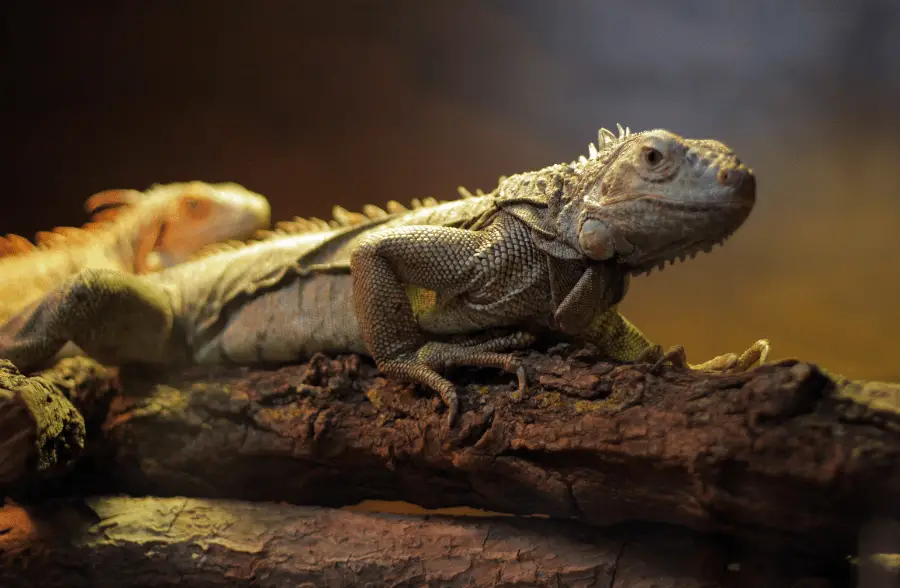If you have a specific design you want to paint your reptile enclosure with, it’s incredibly important to choose the right type of paint. You must make sure to use a paint that’s safe for your reptiles, as well as their habitat.
So, is acrylic paint safe for reptiles? Yes, acrylic paint is water-based and typically non-toxic. Water-based paints are free from harsh chemicals that are usually included in other types of paint. This means that you can use them in your reptile enclosure, and it will be safe. However, you should never use any kind of paint on the skin of a reptile.
While acrylic paint is non-toxic, it can still release fumes during the drying process that can be harmful to your reptile. You need to make sure you give the piece plenty of time to dry completely before putting it in with your reptile. It could take several weeks for your piece to be put in with your reptile safely.
Is Acrylic Paint Toxic to Bearded Dragons?
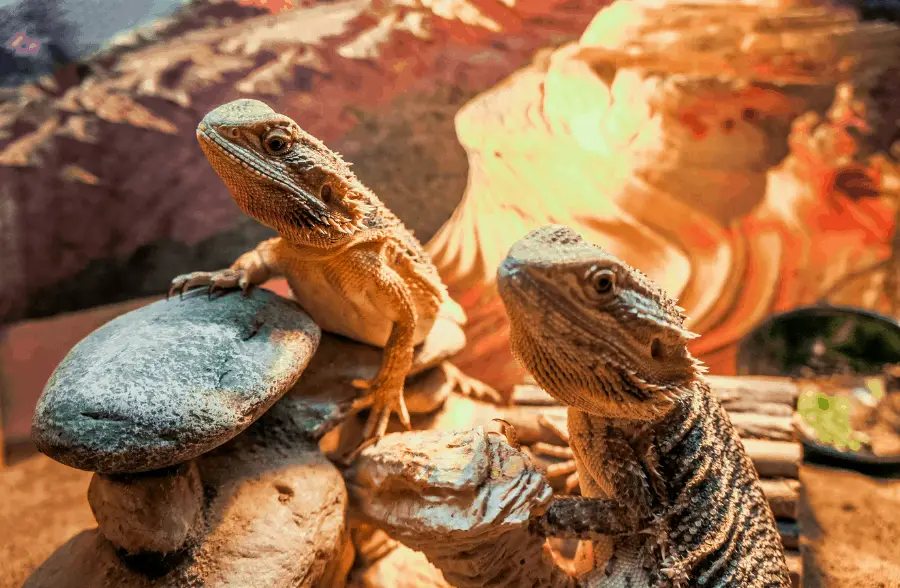
Acrylic paint is not toxic to bearded dragons. Bearded dragons need rocks to help them get closer to their heating lamp. They also need a hide to help them get away from the light every now and then. These additions to your bearded dragon’s environment can be super helpful.
My favorite and top pick is always Arteza Acrylic Paints. They have so many different colors, and the quality is amazing! I usually use Arteza Paints for all my projects.

Most rocks come in plain colors, or in a natural finish. One way to make these look better is to paint them. You can paint designs on the rocks, or you can paint them a solid color. Bearded dragons can see in color, so the color choice does matter. Not every bearded dragon is attracted to the same color, so it might be beneficial to test a few out before making a decision.
Since bearded dragons love to climb, I recommend this Step Ledge Rock for you habitat. It’s the perfect material to pain on, and it provides a nice hiding spot for your pets.

If you are having a hard time deciding on what color to use, it is often said that bearded dragons will be drawn to colors that are on their own skin. You can watch your pet’s preference by testing different colored lights and different colored foods.
You can try painting your rocks or hiding caves with a deep green, or even a nice neutral beige color. You can even add your pets name on or decorate it however you want. I recommend having a few painted rocks in their habitat, and this way you can also see which color they prefer.
Is Acrylic Paint Safe for Leopard Geckos?
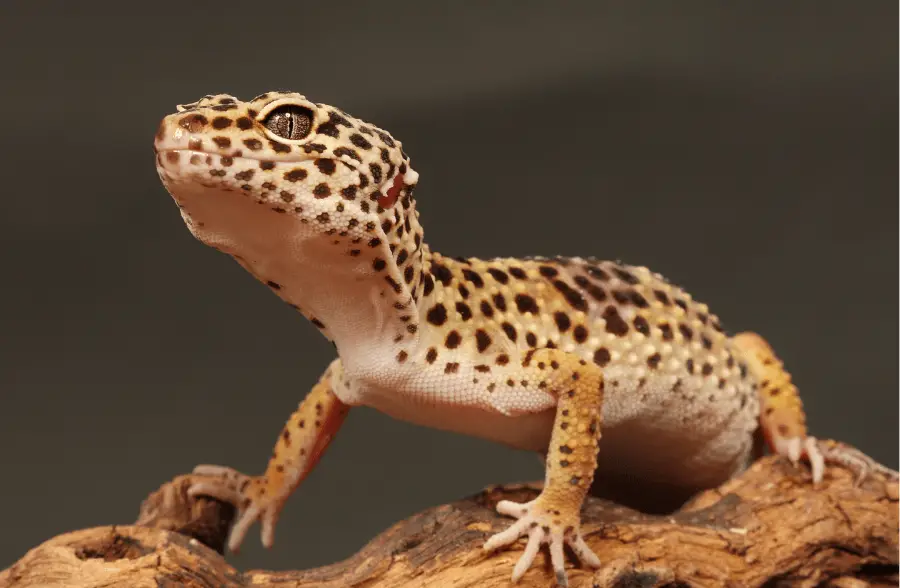
Leopard geckos are insanely adorable reptiles. If you want to add some color to your leopard gecko’s habitat, you can do so with acrylic paint. Acrylic paint does not pose any threat to the safety of your reptile. You don’t need to worry about it as long as the paint is completely dry before exposure.
Leopard geckos can see color, even in the dark. They have shown to be slightly more interested in colors like blue or green, but each gecko is different. Like the bearded dragon, you can test out different colors with your gecko to see which color they seem to like more.
Your leopard gecko needs a hide and an assortment of rocks. They enjoy climbing, so they will be more drawn to climb on rocks that are a color they like. They also enjoy having options, so you can try to put a few different colors in their habitat.
This Hideout Cave is perfect for geckos, and you can also use acrylic paints to decorate it. Geckos like to sleep together, so you don’t need to worry about the cave not being big enough.

Is Acrylic Paint Safe for Vivarium?
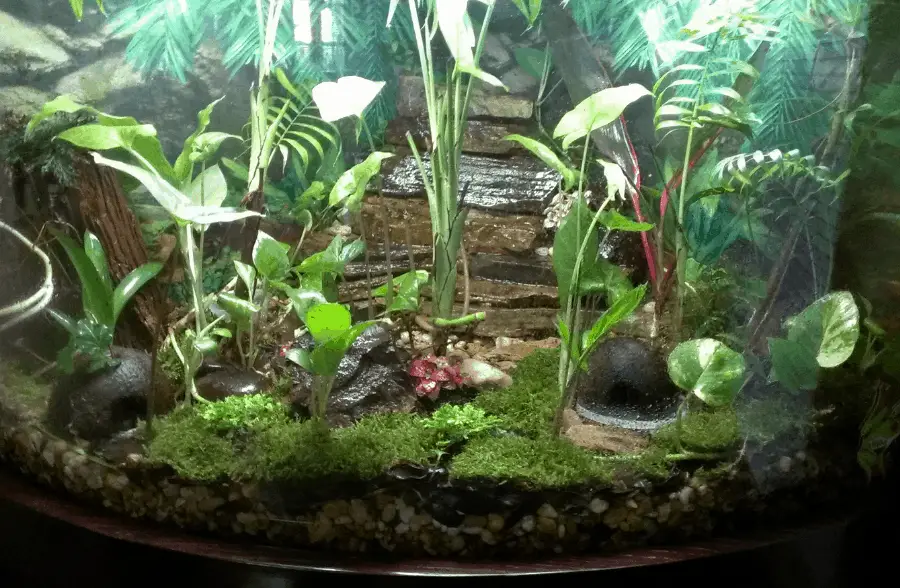
Any kind of acrylic paint is safe for use in a vivarium. In your vivarium, you have complete control over the elements like humidity, heat, and lighting. Decorating your vivarium is one of the best parts of setting it up. You can put whatever you want in a vivarium, as long as it is safe for the reptile that will be living in it.
Acrylic paints are safe for reptiles, so you can use it on any part of your vivarium. It is important to not place the painted object in the vivarium before it has had a proper amount of time to dry. The fumes let out by acrylic paint can get caught in the vivarium if it is closed up to finish drying.
This Arteza Rock Paint Set is also a great choice if you will be using outdoor rocks. The paint is super durable and won’t wash off when you clean your reptile’s vivarium.

You can also paint the vivarium itself. The most popular material for a vivarium is wood. You can use acrylic paint to paint the vivarium to match the rest of your decor. When you do, you will have to seal it with a varnish. The varnish will also need to completely dry before you put any reptile in it.
When dealing with wood, you will need to make sure you use a varnish that is resistant to rotting and mold. This will protect the wood from elements, and it will protect your reptile from the paint you put on the wood.
I highly recommend Krylon Spray Varnish. It’s great for acrylic paints, and safe for animals to be around, once it’s dry of course.
Is Acrylic Paint Safe for Lizards?
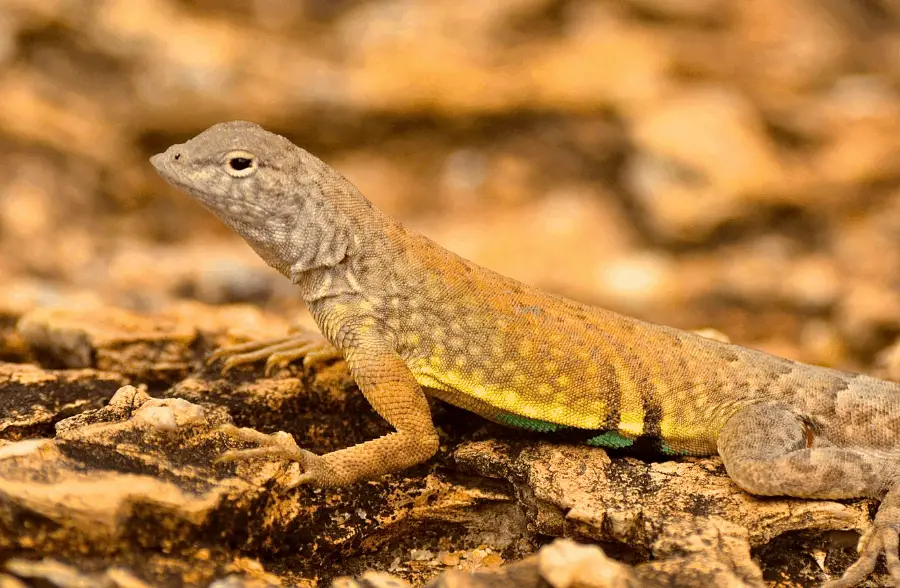
Yes, acrylic paints are also safe to be used around lizards. Lizards like to bask in the warmth, so adding some rocks can make it easier for them to get closer to the light. Lizards also like to hide, so you can provide them with logs or rocks to hide under.
This Basking Rock is a great option if you are looking to paint it with acrylic paints. It’s not just for lizards, so you can re-use it later on if need be.

You don’t need to worry about the heat from the lamp having any impact on the paint. Heat lamps that lizards need will only heat to about 115 degrees Fahrenheit. This is way below the temperature at which acrylic will start to soften, which is about 350 degrees Fahrenheit.
Lizards are mostly attracted to colors like blue or green. This is not the same for all lizards, as each lizard is different. If you get your lizard as an adult, it is possible that they have a negative association with certain colors. Test out your lizard’s reaction to colors before choosing which you will use.
Is Acrylic Paint Safe for Chameleons?
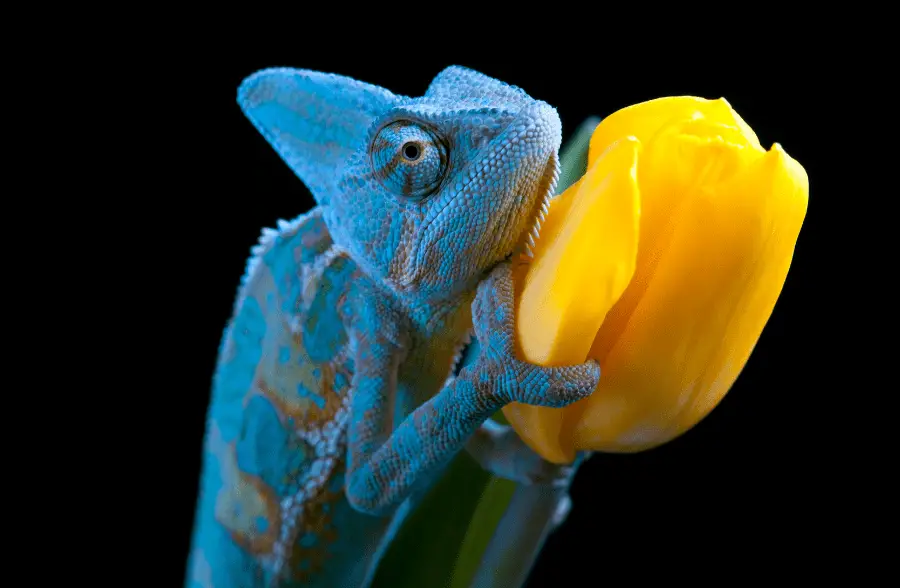
You’ll be happy to hear that acrylic paint is safe for chameleons. With their ability to change color, you should use paint that matches what their natural environment would. Green and brown are the most predominant colors in chameleons, because it is the most common in nature.
This Acrylic Paint Set is a great choice for your chameleon’s rocks and home. They’re specially made for rocks and can sustain your reptiles environment.
Black is a color you should steer clear of for chameleons. This is a color they use when they are feeling threatened, and it won’t make them feel happy in their environment. Since chameleons live in plants and trees, it is best to use paint that resembles the plants you are putting into their environment.

Chameleons also need a misting system to be happy. Luckily, acrylic paint is water-resistant. This means you won’t need to worry about the paint being disturbed by the water. You can also add a waterproof coating on top of the paint to add an extra layer of protection. Below we go over waterproof sealants for your acrylic paint projects.
Reptile Safe Waterproof Sealant
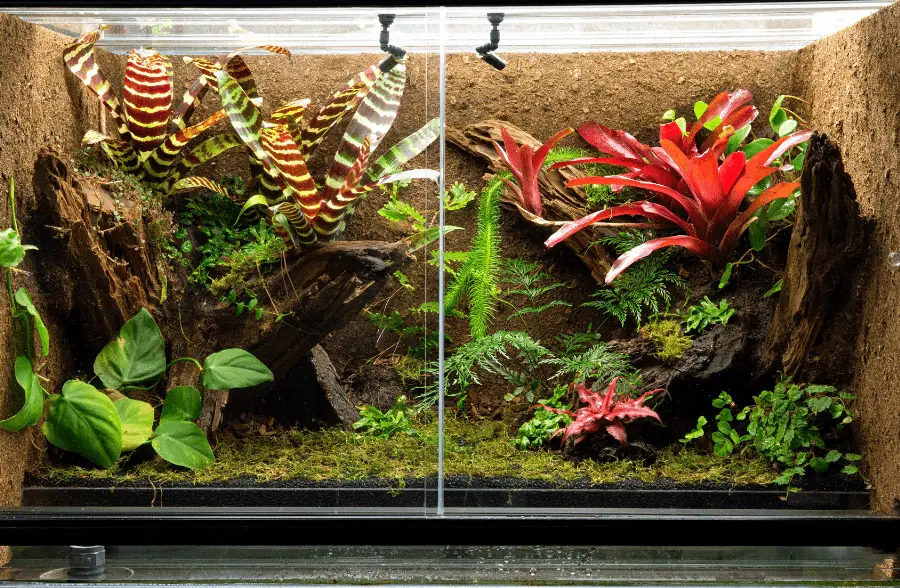
When picking a sealant for your project, it is just as important to make sure it is safe for your reptile. It will be beneficial to choose a sealant that is waterproof. Reptiles will like spending time in water, or they might just be messy drinkers. Either way, your paint is bound to get wet at some point.
Mod Podge is my top recommendation if you need to waterproof your acrylic paint. It’s highly effective, and dries super fast! I would definitely have this handy when painting your vivarium.

Krylon Spray Sealers are also a top pick. They come in a glossy or matte finish, and even protect your paint against UV rays. If you have lighting in your reptile’s habitat, Krylon protects the paints from it as well.

The sealant is important not only to keep the paint safe, but also to keep the lizard safe. The sealant acts as a shield between the reptile and the paint. Your reptile will spend time on the painted object, and the sealant will prevent the paint from irritating its skin.
You should also pay attention to the volatile organic compound levels of the sealant. Zero VOCs would be the best option, but if you can only find low VOC it will work.
You can also try a brush on varnish, but with different angles of rocks and decorations, it might be easier to spray it on. As always, make sure the paint is fully dry before your apply the varnish. You will want to let the paint dry for about 2-8 hours, depending on how many layers you used.
Once the paint is dry, you can apply the sealer. Make sure to spray about 10 inches away from the rocks or surface you are spraying, and never spray in a room where your reptiles are in. You should have plenty of air or ventilation before painting and spraying the varnish.
I recommend letting the rocks or decorations dry for a few days before moving them into the habitat, and even then, make sure they don’t have a strong smell, or your reptiles might not want to climb on them.
Final Thoughts
If you want to use some paint to bring some color to your reptile’s habitat, you can do so with acrylic paints. Acrylic paints are water-based and non-toxic, meaning your reptile will not be endangered by the paint as long as it has plenty of time to dry before you put it in the habitat.
The paint colors you choose for your reptile’s habitat will depend on the reptile. You want to make sure you choose a color that makes your reptile happy and that they are attracted to. You can choose the right color by testing out a few near the reptile to see what they respond to.
Make sure to follow all my tips and recommended products, so your acrylic painted decorations are reptile friendly. Also, don’t forget to check out my other articles for all your painting Q&A’s. Happy painting!

